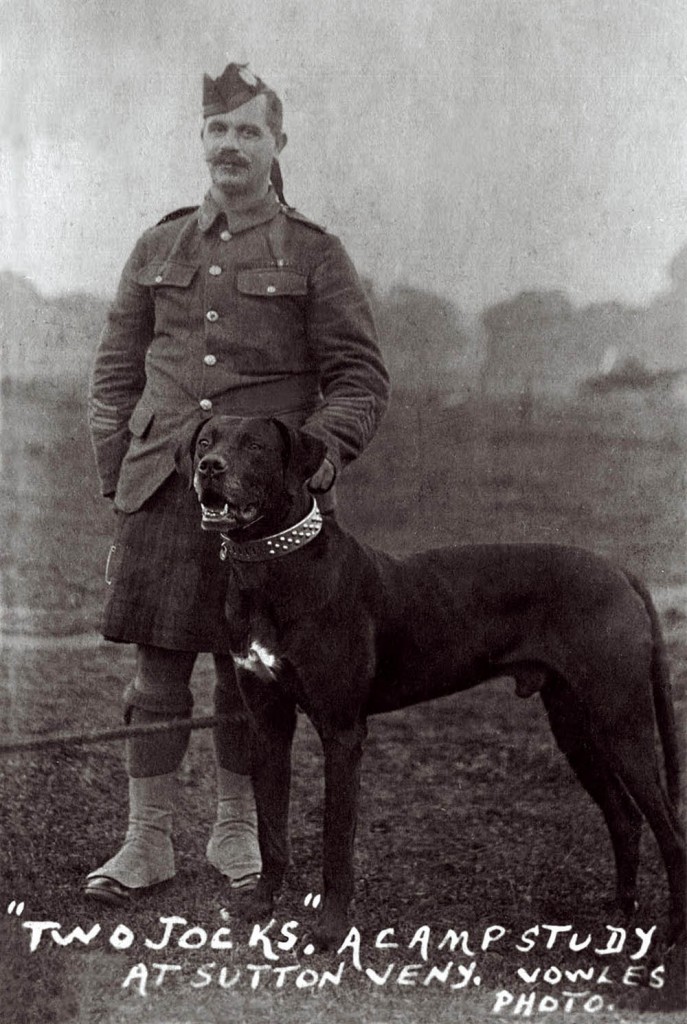A PIPER who played as doomed Scots footballers headed to their fate at the Battle of the Somme has finally been honoured – 90 years after his death.
In 1916, Sergeant William Duguid was pipe-major of “McCrae’s Battalion” of the 16th Royal Scots – dubbed “the sporting battalion.”
The 1,350 fighting men of the battalion were mostly amateur or professional sportsmen – with professional players and diehard fans of bitter rivals Hearts and Hibs fighting alongside one another.
Duguid piped the McCrae’s out of Edinburgh and then again at Southampton docks where the battalion set sail – bound for the Somme.
But it was his great sorrow that he was never able to play the pipes for the battalion on their return – as up to three quarters of the battalion were slaughtered in one of the bloodiest battles of WWI.

In spite of a prolific military career Duguid was buried in an unmarked grave, but yesterday (THURS) a memorial plaque was unveiled to mark his final resting place in Edinburgh to “right an old wrong.”
The plaque was unveiled to marked the centenary of the battalion’s departure for the front lines of WWI.
And it will also commemorate the battalion’s imposing Great Dane mascot, Jock.
The first volunteers for McCrae’s Battalion were 11 professional players from Heart of Midlothian – along with fellow players from Raith Rovers, Falkirk, Hibernian and Dunfermline.
The regiment was the first of the “footballers’ battalions” of the war – in a model that was replicated throughout the British military.
But on their first day over the top 810 of the battalion were killed or wounded in just half an hour of action.
When WWI broke out in 194 pipe-major Duguid was already a 40 year-old veteran of the Gordon Highlanders.
In 1897 he led his battalion in Pakistan, before fighting the Boers in South Africa.
After receiving an honourable discharge from the force he volunteered to join up again when WWI broke out.
Pipers in Scottish battalions often doubled as stretcher bearers in battle – and on the first day of the Somme Duguid dodged bullets from german machine guns to rescue wounded comrades.
But friends said that after the bloody battle he was left broken, before dying in 1929 at 53 year-old.
His family could not afford a headstone at his resting place at Piershill Cemetery in Edinburgh – a state of affairs now set to right by the McCrae’s Battalion Trust.
James Alexander – the historian behind the design of the memorial – said: “It’s another piece of the jigsaw puzzle.
“We need to keep the tradition of remembrance alive among young people.
“McCrae’s Battalion were very idealistic, optimistic young men and it all ended in tragedy. This commemorates the gravestone of the man who led them to France.
“He was an older man who suffered watching his young comrades wiped out.”
At the ceremony today an honour guard from The Royal Regiment of Scotland unveiled the memorial plaque, which also marks the final resting place of his daughter Euphemia and wife Fanny.
The plaque also pays tribute to Jock – the battalion’s Great Dane mascot – who, legend has it, stopped eating and pined away in the grim aftermath of the bloodbath at the Somme.
More than 100 gathered to “right the wrong” of “Dugie’s” unmarked grave in spite of the bitter winds and rain battering the graveyard in Piershill, east Edinburgh.
They heard the tale of how he gave up a “plum position” as head porter of a local hospital – which came with a host of cushy benefits – to rejoin the army when WWI was declared.
And they also heard of how he deteriorated after the brutal massacre on the first day of the Somme – never recovering from the horrors he had witnessed in the trenches.
The brief service was followed by musical tributes from a pipe-major of the Royal Regiment of Scotland – and a bugle rendition of the last post call.
The pipe-major then laid a cross at the foot of the memorial to honour Duguid’s service as a musician.
Sarah Innes, 80, laid the wreath at the head of the memorial in tribute to her deceased father – the Adjutant of the 16th Royal Scots.
Speaking about Willie, she said: “He was a true soldier to go out and fight for king and country.”
Jack Alexander, 57 – the historian who led the charge to have Willie’s grave marked said: “This is just one of a number of initiatives that we’ve had over the last ten years to make sure that the battalion that was completely forgotten has now been remembered.
“It was a completely unmarked lair when he died in 1929 – the family had no money and they just left him there – and then they didn’t have any money, so his wife and daughter are also buried there unmarked.
“It’s significant because of Willie being the piper – and he was completely forgotten – he was a significant individual in the history of the battalion.”
Mr Alexander has also organised the building of a cairn at the village of Contalmaison in France, where so many of the soldiers lost their lives.
Major Gary Tait of 2 Scots – who led the service – added: “It took that spark of Jack Alexander not being content with the fact that a soldier who served with such distinction was buried in an unmarked grave.”